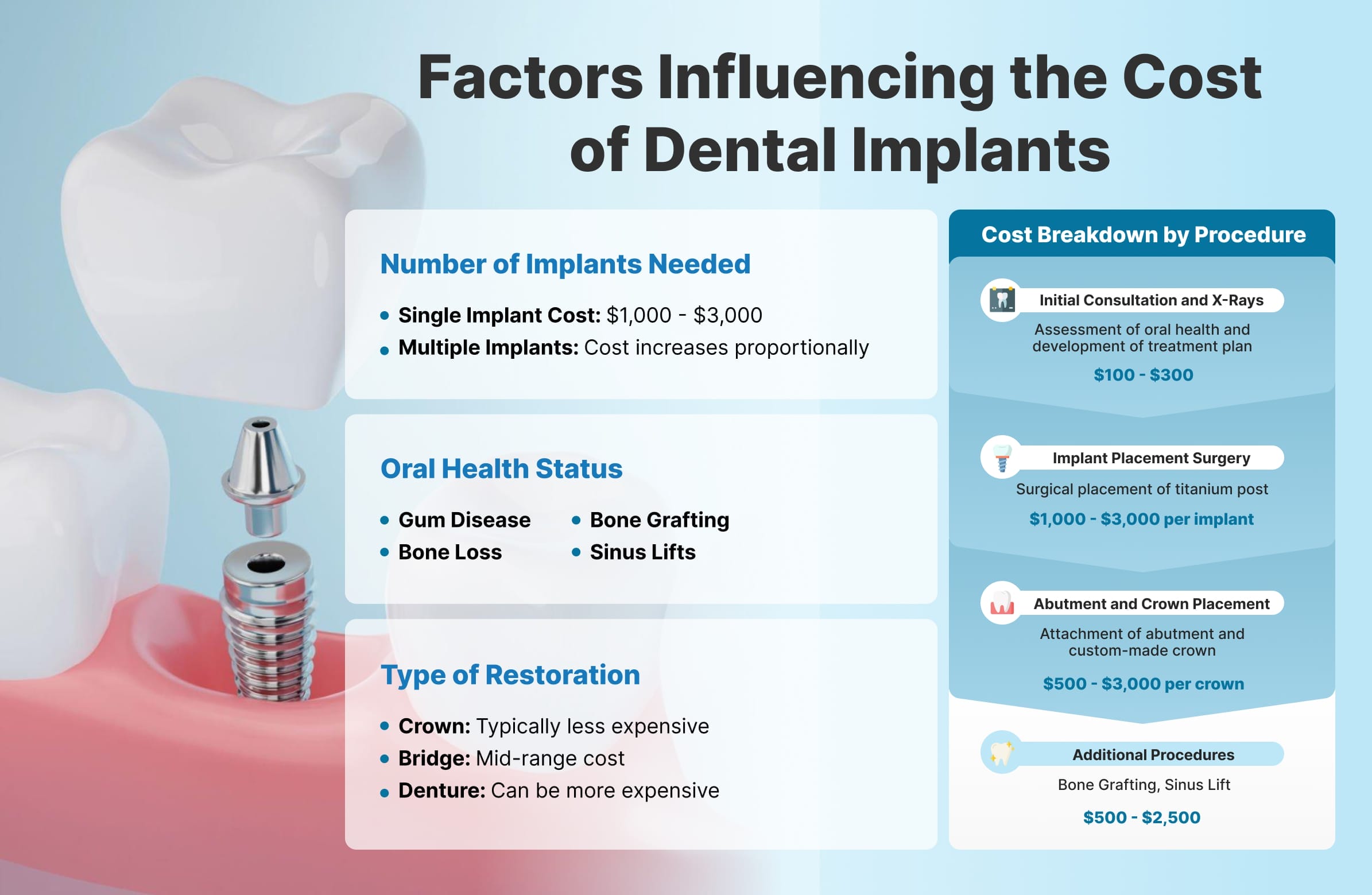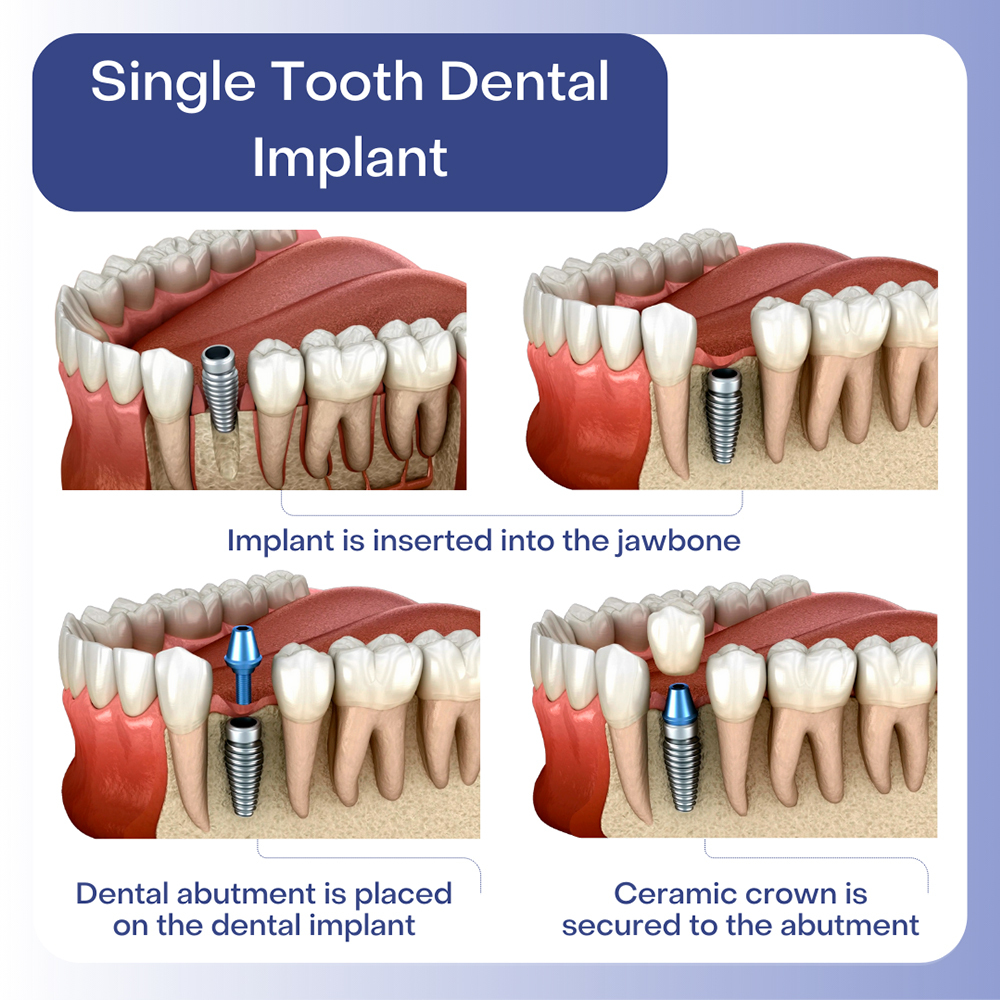The Definitive Guide to Dental Sense
The Definitive Guide to Dental Sense
Blog Article
Top Guidelines Of Dental Sense
Table of ContentsThe Facts About Dental Sense UncoveredDental Sense Things To Know Before You BuyDental Sense - An OverviewSome Known Questions About Dental Sense.
are medical tools operatively dental implanted right into the jaw to restore an individual's capability to chew or their look. They supply assistance for synthetic (fake) teeth, such as crowns, bridges, or dentures. When a tooth is shed as a result of injury or disease, an individual can experience difficulties such as rapid bone loss, malfunctioning speech, or modifications to eating patterns that result in pain.Dental dental implant systems include a dental implant body and dental implant joint and may likewise include an abutment fixation screw. Professional teeth whitening. The oral implant body is surgically inserted in the jawbone in place of the tooth's origin. The dental implant abutment is usually connected to the implant body by the joint fixation screw and expands through gum tissues right into the mouth to support the affixed fabricated teeth
(https://hubpages.com/@dentalsense1)Framework of The Dental Implant System choosing dental implants, talk with your oral copyright regarding the possible benefits and threats, and whether you are a candidate for the procedure. Points to take into consideration: Your total wellness is an essential aspect in determining whether you are an excellent candidate for oral implants, how much time it will certainly take to heal, and how long the dental implant might remain in place.
Smoking cigarettes may influence the recovery process and decrease the long-lasting success of the dental implant. The recovery process for the implant body might take numerous months or longer, during which time you usually have a short-lived abutment instead of the tooth. the oral implant treatment: Meticulously comply with the oral health directions provided to you by your oral company.
The Definitive Guide to Dental Sense
Implant failing can lead to the demand for one more procedure to take care of or change the implant system. Brings back the capacity to chew Recovers aesthetic look Aids maintain the jawbone from diminishing due to bone loss Maintains the health and wellness of the surrounding bone and periodontals Assists maintain surrounding (nearby) teeth stable Improves lifestyle Damages to surrounding natural teeth throughout dental implant placement Injury to the surrounding cells during surgical procedure, such as sinus perforation Injury during surgical treatment (for example, fracture of bordering jawbone) Poor feature, such as really feeling like the teeth do not attack with each other generally An experience that the tooth hangs or twisting in location resulting from an abutment screw loosening up Implant body failure (looseness of the dental implant body) because of systemic infection, which might be more most likely in patients with unrestrained diabetes because of regional infection in bone and gums supporting the implant body as a result of postponed recovery, which may be much more most likely in clients that smoke Problem cleansing the periodontals around the implant, resulting in poor dental health Untreated gum disease Post-surgical numbness because of nerve impingement or damage Always alert health and wellness care carriers and imaging specialists that you have oral implants before any kind of magnetic vibration imaging (MRI) or x-ray procedures.
FDA is not familiar with any type of damaging events reported for MRI or x-ray treatments with dental implants. Oral implants systems are commonly constructed from products that adhere to global agreement criteria of the International Company for Standardization (ISO) or ASTM International. These requirements have information of what makes a safe product.

An oral implant is a structure that changes a missing out on tooth. With screw-like devices, the doctor inserts a dental implant right into the jawbone, and it acts as an anchor for an artificial tooth, called a crown.
4 Simple Techniques For Dental Sense
Some individuals are not qualified for oral implant surgical treatment. It is for dental surgeons to operate individuals with: intense illnessuncontrollable metabolic diseasebone or soft tissue disease or infectionIf these concerns are dealt with, an individual can have the surgery. In, oral specialists abstain from operating people with: If people with any of the above go through oral implant surgical procedure, there is a higher risk of the dental implant falling short.

Dental dental implant surgical procedure is a personalized process. It's not the exact same for everyone. The adhering to provides a general review of what you can expect your dentist, dental specialist, periodontist or prosthodontist to do: Put the dental implant surgically. Offer you time to recover. Attach the article and last crown, bridge or denture.
Next, your cosmetic surgeon will meticulously place the oral implant into your jaw. If your implant is near the front of your mouth, your dental practitioner will make a temporary tooth for you to put on until you recover.
How Dental Sense can Save You Time, Stress, and Money.
Your provider can inform you what to anticipate in your scenario. Throughout the recovery stage, your jawbone must fuse to the oral implant. This procedure, called osseointegration, is critical for security and lasting success. This process can take anywhere from 3 to 9 months. Sometimes, it might take much longer.
As soon as your implant heals, your dental professional can attach the abutment (little connector post) and your last remediation (crown, bridge or denture). This usually takes about one hour to finish and might need a 2nd minor surgery. You shouldn't really feel any type of pain during your dental implant procedure since your copyright will certainly make use of medication to numb your gums.
Report this page